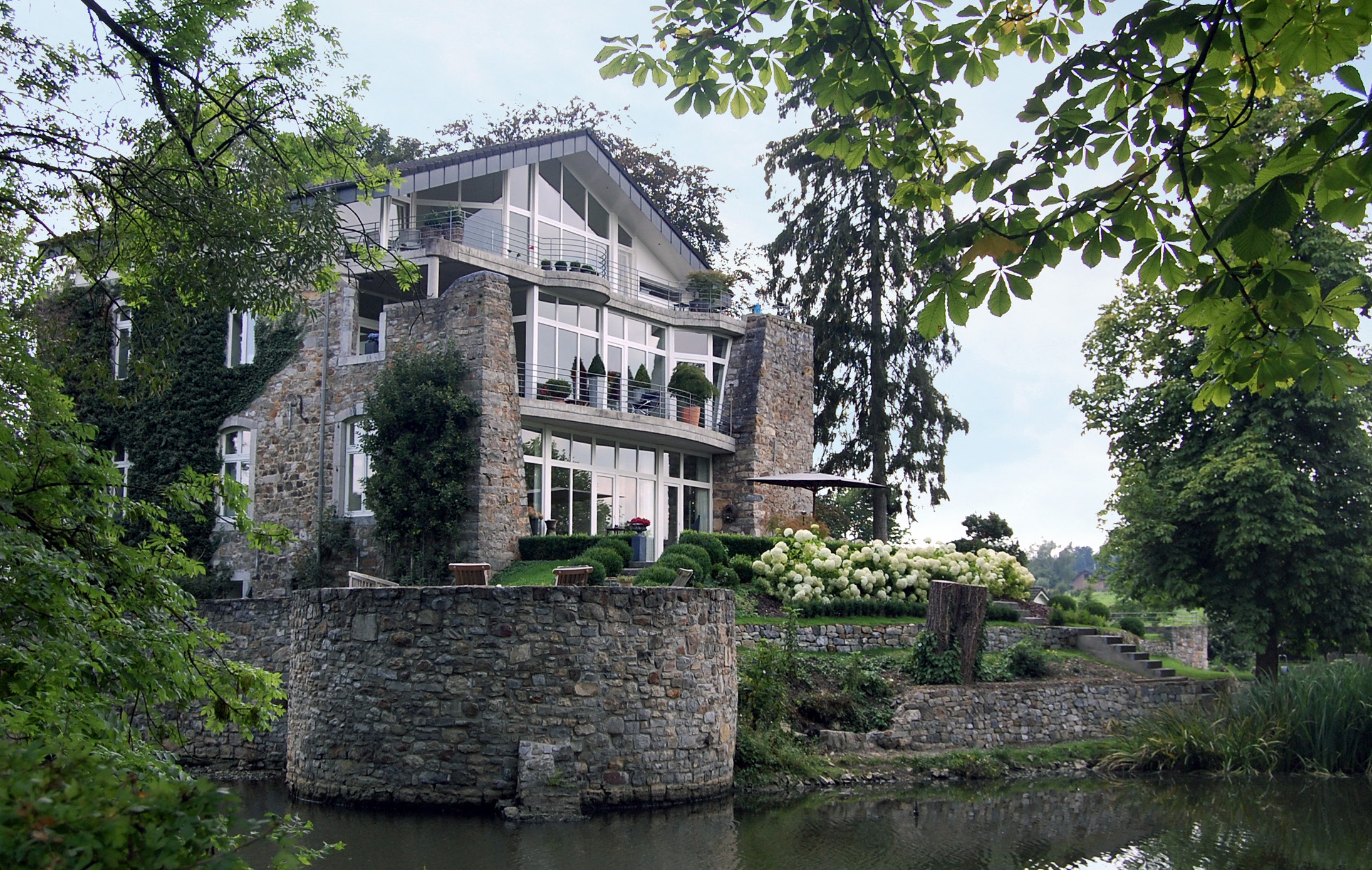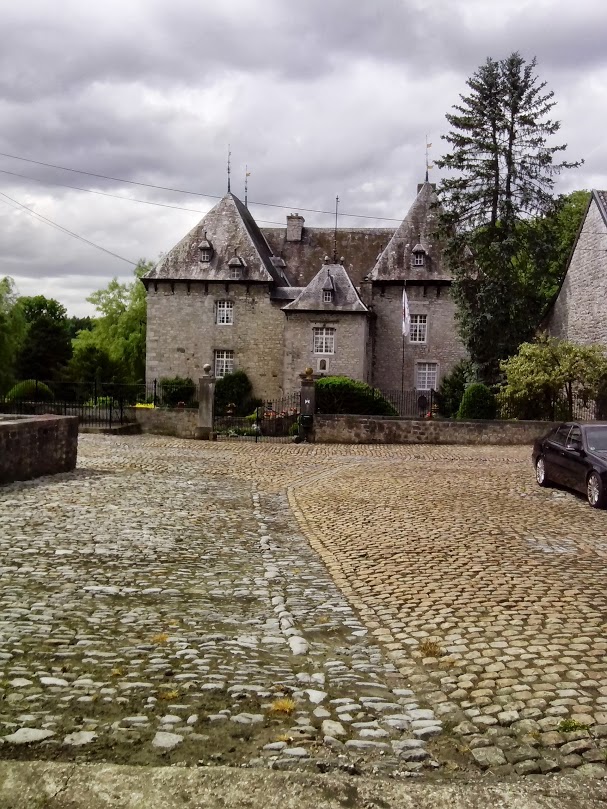|
Vlattenhaus
The Vlattenhaus is a castle-like building in the town of Eynatten, belonging to the Belgian municipality of Raeren, located on Hauseter Straße, just 200 meters away from Amstenrath Castle. History In the 2nd half of the 14th century, the Vlattenhaus was built by ''Peter of Eynatten'', the brother of Johann of Eynatten who had a predecessor of the adjacent castle built. On the site of the Vlattenhaus there was probably previously a feudal farm of the estate Amstenrath. In 1434 the male line of the family died out and the house, through marriage, came into other hands. In 1728 the house, which was rather dilapidated at the time, was given to the Jesuits. They had it demolished to build a smaller house in its place. The moats were also turned into fishponds. In 1773, the order was dissolved, and the house was sold again to a private individual. Finally, after World War I World War I or the First World War (28 July 1914 – 11 November 1918), also known as the Great War, w ... [...More Info...] [...Related Items...] OR: [Wikipedia] [Google] [Baidu] |
Eynatten
Eynatten is a village in the Belgian municipality of Raeren, part of the German-speaking Community of Belgium. Eynatten is on the border to Germany, south from Aachen. Around half of the population are non-Belgians, most of them Germans. Eynatten is located on route N68 between Aachen, Germany and the German-speaking Belgian town of Eupen. Eupen is around to the southwest. Frequent bus services run between Aachen and Eupen, stopping at various places in Eynatten en route. See also * Oehl * Vlattenhaus External links * Raeren Belgium–Germany border crossings {{Liege-geo-stub ... [...More Info...] [...Related Items...] OR: [Wikipedia] [Google] [Baidu] |
Raeren
Raeren () is a municipality of the German speaking community of Belgium located in the Walloon province of Liège. It was part of Germany until the First World War, after which it became part of Belgium. It is one of several towns in eastern Belgium which predominantly speak German. On 1 January 2006, Raeren had a total population of 10,091. The total area is 74.21 km2 which gives a population density of 136 inhabitants per km2. The municipality consists of the following sub-municipalities: Eynatten, Hauset, and Raeren proper. Mathias Cormann, the former Minister for Finance of Australia and current Secretary-General of the OECD, was raised in Raeren. Transportation Its was the hub and headquarters of the Vennbahn railway. Image:Raeren, Sankt Nikolauskirche foto1 2010-09-04 15.57.JPG, Raeren, church: Sankt Nikolauskirche Image:BurgRaeren02.jpg, Raeren Castle See also * List of protected heritage sites in Raeren * German-speaking community of Belgium The ... [...More Info...] [...Related Items...] OR: [Wikipedia] [Google] [Baidu] |
Jesuits
The Society of Jesus (; abbreviation: S.J. or SJ), also known as the Jesuit Order or the Jesuits ( ; ), is a religious order (Catholic), religious order of clerics regular of pontifical right for men in the Catholic Church headquartered in Rome. It was founded in 1540 by Ignatius of Loyola and six companions, with the approval of Pope Paul III. The Society of Jesus is the largest religious order in the Catholic Church and has played significant role in education, charity, humanitarian acts and global policies. The Society of Jesus is engaged in evangelization and apostolic ministry in 112 countries. Jesuits work in education, research, and cultural pursuits. They also conduct retreats, minister in hospitals and parishes, sponsor direct social and humanitarian works, and promote Ecumenism, ecumenical dialogue. The Society of Jesus is consecrated under the patron saint, patronage of Madonna della Strada, a title of the Blessed Virgin Mary, and it is led by a Superior General of ... [...More Info...] [...Related Items...] OR: [Wikipedia] [Google] [Baidu] |
Fishponds
Fishponds is a suburb in the north-east of the English city of Bristol, about from Bristol city centre, the city centre. It is mainly residential, and housing is typically terraced Victorian. It has a small student population from the presence of the Glenside, Bristol, Glenside campus of the University of the West of England. Fishponds is home to Oldbury Court, a Victorian landscaped park. The River Frome, Bristol, River Frome runs through the area with the Frome Valley Walkway alongside it. A restored mill found at Snuff Mills has kept its original waterwheel, which can still be seen and heard turning. To the south-west of the neighbourhood is Eastville Park. The name Fishponds derives from former quarries which upon abandonment became large fishponds. Most of these have since been filled in. One remains and was a popular swimming area nicknamed "The Lido (swimming pool), Lido" until the mid-1970s, when it was acquired by an angling club. Transport Fishponds is mainly serve ... [...More Info...] [...Related Items...] OR: [Wikipedia] [Google] [Baidu] |
World War I
World War I or the First World War (28 July 1914 – 11 November 1918), also known as the Great War, was a World war, global conflict between two coalitions: the Allies of World War I, Allies (or Entente) and the Central Powers. Fighting took place mainly in European theatre of World War I, Europe and the Middle Eastern theatre of World War I, Middle East, as well as in parts of African theatre of World War I, Africa and the Asian and Pacific theatre of World War I, Asia-Pacific, and in Europe was characterised by trench warfare; the widespread use of Artillery of World War I, artillery, machine guns, and Chemical weapons in World War I, chemical weapons (gas); and the introductions of Tanks in World War I, tanks and Aviation in World War I, aircraft. World War I was one of the List of wars by death toll, deadliest conflicts in history, resulting in an estimated World War I casualties, 10 million military dead and more than 20 million wounded, plus some 10 million civilian de ... [...More Info...] [...Related Items...] OR: [Wikipedia] [Google] [Baidu] |
Belgium
Belgium, officially the Kingdom of Belgium, is a country in Northwestern Europe. Situated in a coastal lowland region known as the Low Countries, it is bordered by the Netherlands to the north, Germany to the east, Luxembourg to the southeast, France to the south, and the North Sea to the west. Belgium covers an area of and has a population of more than 11.8 million; its population density of ranks List of countries and dependencies by population density, 22nd in the world and Area and population of European countries, sixth in Europe. The capital and Metropolitan areas in Belgium, largest metropolitan region is City of Brussels, Brussels; other major cities are Antwerp, Ghent, Charleroi, Liège, Bruges, Namur, and Leuven. Belgium is a parliamentary system, parliamentary constitutional monarchy with a complex Federation, federal system structured on regional and linguistic grounds. The country is divided into three highly autonomous Communities, regions and language areas o ... [...More Info...] [...Related Items...] OR: [Wikipedia] [Google] [Baidu] |
Outer Bailey
An outer bailey or outer ward is the defended outer enclosure of a castle.Friar, Stephen (2003). ''The Sutton Companion to Castles'', Sutton Publishing, Stroud, 2003, p. 22. It protects the inner bailey and usually contains those ancillary buildings used for the management of the castle or the supply of its occupants. These domestic buildings could include workshops, livestock stalls and stables; storage facilities such as barns, sheds and granaries, as well as quarters for servants such as maids, farm workers, and even the castle governors or castellans. In many cases there was also a brewery, a bakehouse and a kitchen, if the latter was not located in the hall or ''palas''. An outer bailey was often called a base court in England. Depending on topography it could also be referred to as a lower bailey or lower ward, the keep being in the upper bailey or ward. Chepstow Castle has lower, middle and upper baileys. The domestic buildings of the continental ''schloss'', often a sta ... [...More Info...] [...Related Items...] OR: [Wikipedia] [Google] [Baidu] |
Quarry
A quarry is a type of open-pit mining, open-pit mine in which dimension stone, rock (geology), rock, construction aggregate, riprap, sand, gravel, or slate is excavated from the ground. The operation of quarries is regulated in some jurisdictions to manage their safety risks and reduce their environmental impact. The word ''quarry'' can also include the underground quarrying for stone, such as Bath stone. History For thousands of years, only hand tools had been used in quarries. In the eighteenth century, the use of drilling and blasting operations was mastered. Types of rock Types of rock extracted from quarries include: *Chalk *China clay *Scoria, Cinder *Clay *Coal *Construction aggregate (sand and gravel) *Coquina *Diabase *Gabbro *Granite *Gritstone *Gypsum *Limestone *Marble *Ores *Phosphate rock *Quartz *Sandstone *Slate *Travertine Methods of quarrying The method of removal of stones from their natural bed by using different operations is called quarryin ... [...More Info...] [...Related Items...] OR: [Wikipedia] [Google] [Baidu] |
Castles In Belgium
A castle is a type of fortification, fortified structure built during the Middle Ages predominantly by the nobility or royalty and by Military order (monastic society), military orders. Scholars usually consider a ''castle'' to be the private fortified house, fortified residence of a lord or noble. This is distinct from a mansion, palace, and villa, whose main purpose was exclusively for ''pleasance'' and are not primarily fortresses but may be fortified. Use of the term has varied over time and, sometimes, has also been applied to structures such as hill forts and 19th- and 20th-century homes built to resemble castles. Over the Middle Ages, when genuine castles were built, they took on a great many forms with many different features, although some, such as curtain wall (fortification), curtain walls, arrowslits, and portcullises, were commonplace. European-style castles originated in the 9th and 10th centuries after the fall of the Carolingian Empire, which resulted ... [...More Info...] [...Related Items...] OR: [Wikipedia] [Google] [Baidu] |





